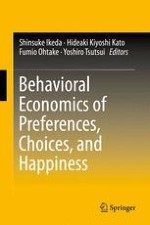2016 | OriginalPaper | Buchkapitel
13. Economic and Behavioral Factors in an Individual’s Decision to Take the Influenza Vaccination in Japan
verfasst von : Yoshiro Tsutsui, Uri Benzion, Shosh Shahrabani
Erschienen in: Behavioral Economics of Preferences, Choices, and Happiness
Verlag: Springer Japan
Aktivieren Sie unsere intelligente Suche, um passende Fachinhalte oder Patente zu finden.
Wählen Sie Textabschnitte aus um mit Künstlicher Intelligenz passenden Patente zu finden. powered by
Markieren Sie Textabschnitte, um KI-gestützt weitere passende Inhalte zu finden. powered by
